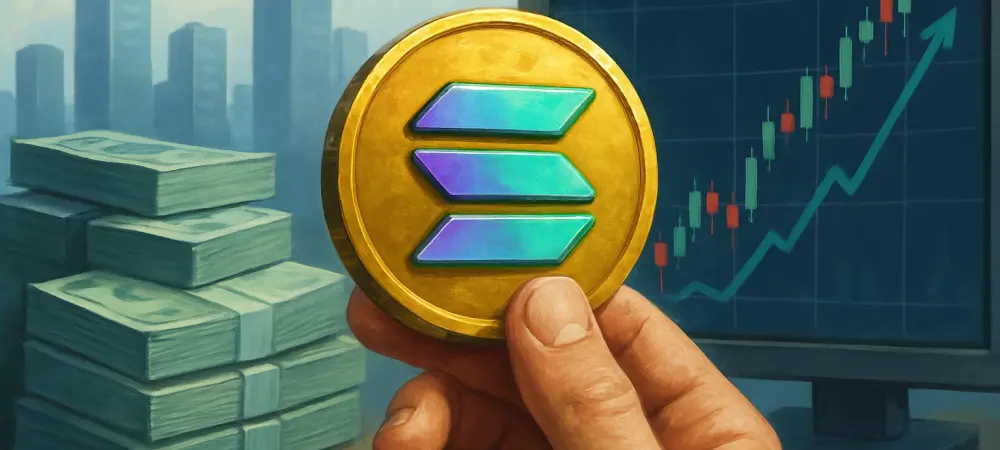Tokenization on the Solana blockchain is reshaping how investors access equity in innovative companies, breaking down barriers that once limited participation to elite circles, and with global investment platforms partnering with cutting-edge blockchain technology, a new era of financial inclusion is emerging. This roundup dives into diverse perspectives from industry leaders, blockchain enthusiasts, and financial innovators to uncover how Solana is driving this transformation. The purpose is to gather insights, tips, and opinions on the impact of tokenized equity, the technical advantages of Solana, and the broader implications for capital markets, offering a comprehensive view of this groundbreaking trend.
Diverse Perspectives on Solana’s Role in Tokenized Equity
Insights on Democratizing Investment Opportunities
Industry observers highlight that tokenization on Solana is creating unprecedented access to equity in companies not listed on public exchanges. Many point to partnerships like the one between a prominent global investment platform and a leading Web3 firm as a prime example of how blockchain can open doors for retail investors. This collaboration allows tokenized equity to be traded on a worldwide marketplace, a move seen as a game-changer for liquidity and inclusion.
Another viewpoint emphasizes the significance of bringing ownership of high-growth firms to a broader audience. Commentators note that without tokenization, many investors are confined to over-the-counter markets with limited transparency. The consensus among these voices is that Solana’s infrastructure supports a more seamless and accessible trading environment, paving the way for a shift in how equity is perceived and managed globally.
A differing opinion cautions that while the potential is immense, widespread adoption hinges on investor education. Some industry watchers argue that the complexity of blockchain-based assets might deter mainstream participation unless simplified interfaces and robust support systems are prioritized. This perspective underscores the need for platforms to bridge the knowledge gap as tokenization gains traction.
Opinions on Solana’s Technical Superiority for Tokenization
Blockchain developers and tech analysts frequently praise Solana for its high-speed transactions and low fees, positioning it as a top choice for tokenization projects. Many compare it favorably to other networks, noting that its efficiency reduces friction for both companies and investors. This technical edge is often cited as a reason why firms are increasingly choosing Solana for digitizing assets.
A contrasting take comes from some analysts who, while acknowledging Solana’s strengths, raise concerns about scalability under heavy network demand. They suggest that as more projects migrate to the blockchain, potential bottlenecks could challenge its performance. These voices advocate for ongoing improvements to ensure Solana maintains its competitive advantage over rivals in the long term.
Yet another angle focuses on real-world applications, with tech commentators pointing to examples of companies tokenizing common stock on Solana. This trend is seen as validation of the blockchain’s capabilities, with many believing it could set a standard for future digital asset initiatives. The enthusiasm around such developments reflects a growing confidence in Solana’s role within the evolving financial landscape.
Comparative Views on Bridging Traditional and Blockchain Finance
Thoughts on Merging Old and New Financial Systems
Financial sector professionals often discuss how tokenization on Solana creates a vital link between traditional investment mechanisms and blockchain innovation. Many appreciate the secure and compliant ecosystems being built through strategic partnerships, which ensure regulatory standards are met while pushing technological boundaries. This balance is viewed as essential for gaining trust from institutional players.
A different perspective comes from blockchain advocates who argue that the integration goes beyond compliance, fundamentally altering how property rights are managed. They highlight the minting of tokens representing ownership, securely stored in digital wallets, as a revolutionary step toward digital-first capital markets. This shift is seen as a precursor to redefining ownership structures across industries.
Some traditional finance experts, however, remain skeptical about the long-term viability of such hybrid models. They point to evolving regulatory landscapes as a potential hurdle, suggesting that without global consensus on blockchain rules, widespread adoption could stall. This cautious outlook contrasts with the optimism of tech-forward thinkers but adds a layer of pragmatism to the conversation.
Global Impact and Future Potential of Digital Equity
Industry leaders frequently comment on the global reach of tokenized equity facilitated by Solana, noting its potential to transform internet capital markets. Many believe that as more regions embrace blockchain solutions, the liquidity of previously inaccessible assets will increase dramatically. This vision is often tied to the idea of a borderless investment ecosystem.
On the flip side, some regional analysts warn that disparities in technological infrastructure and regulatory readiness could limit this global impact. They argue that while developed markets may adopt tokenization swiftly, emerging economies might struggle with implementation, creating an uneven playing field. These insights call for tailored approaches to ensure inclusivity across diverse markets.
A forward-looking opinion suggests that tokenization could become a mainstream financial tool within the next few years, especially if platforms continue to innovate. Enthusiasts in this camp urge companies and investors to explore existing marketplaces for tokenized assets as a starting point. Their optimism is tempered by a call for vigilance on compliance and security to sustain momentum.
Key Takeaways from the Tokenization Wave on Solana
Reflecting on the varied opinions, it is evident that Solana’s technical prowess, particularly its speed and cost efficiency, stands out as a cornerstone of its appeal for tokenization. The partnership between global investment platforms and innovative Web3 firms captured attention as a model for expanding equity access. Differing views on scalability and regulatory challenges added depth to the discussion, reminding stakeholders of the complexities involved.
Looking back, the insights gathered underscored a shared belief in the transformative power of blockchain in finance, with Solana at the forefront. For those eager to engage with this trend, exploring established marketplaces for tokenized assets offers a practical next step. Staying informed about regulatory updates and technological advancements is also recommended as a way to navigate this evolving space effectively.

